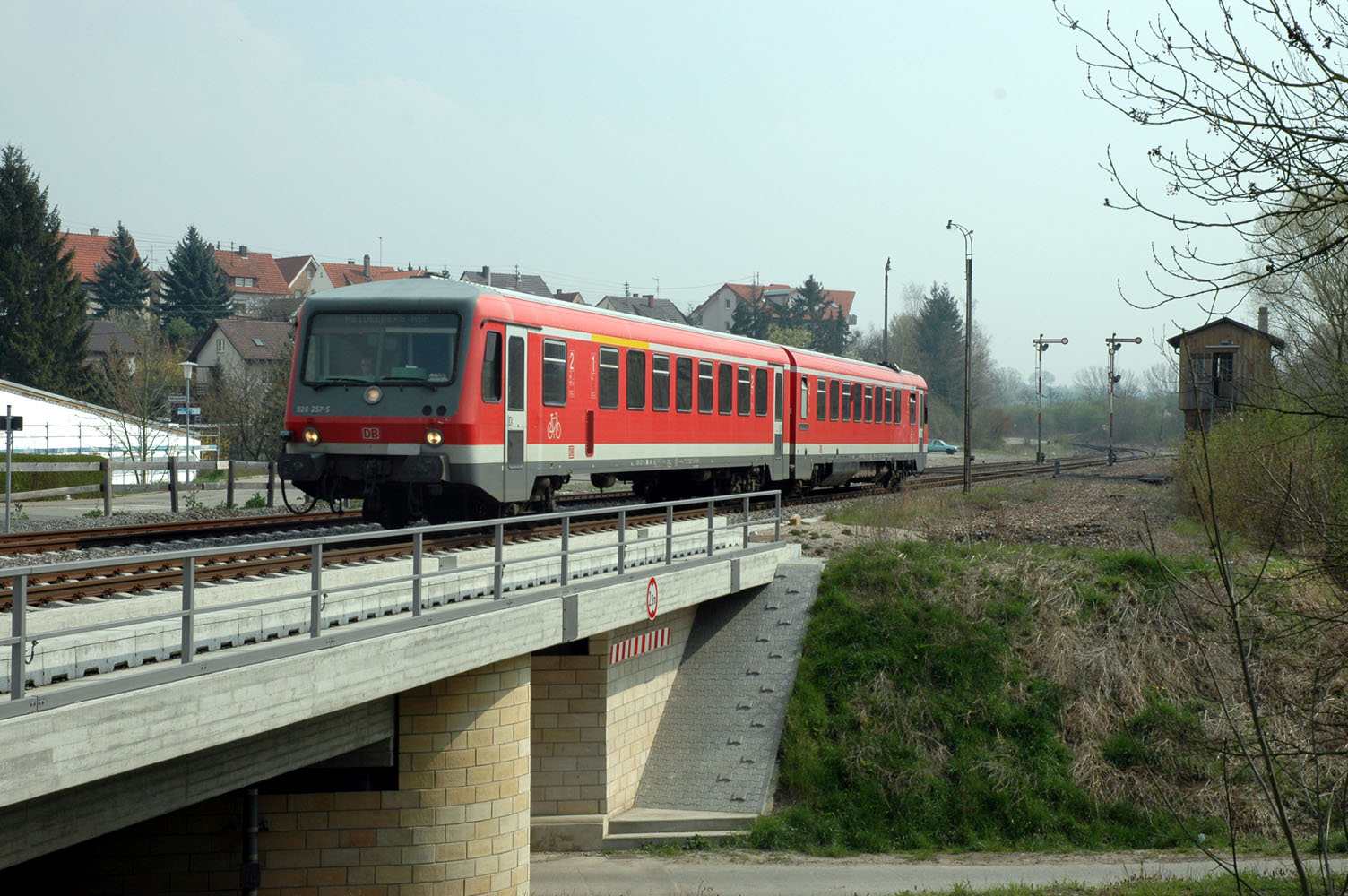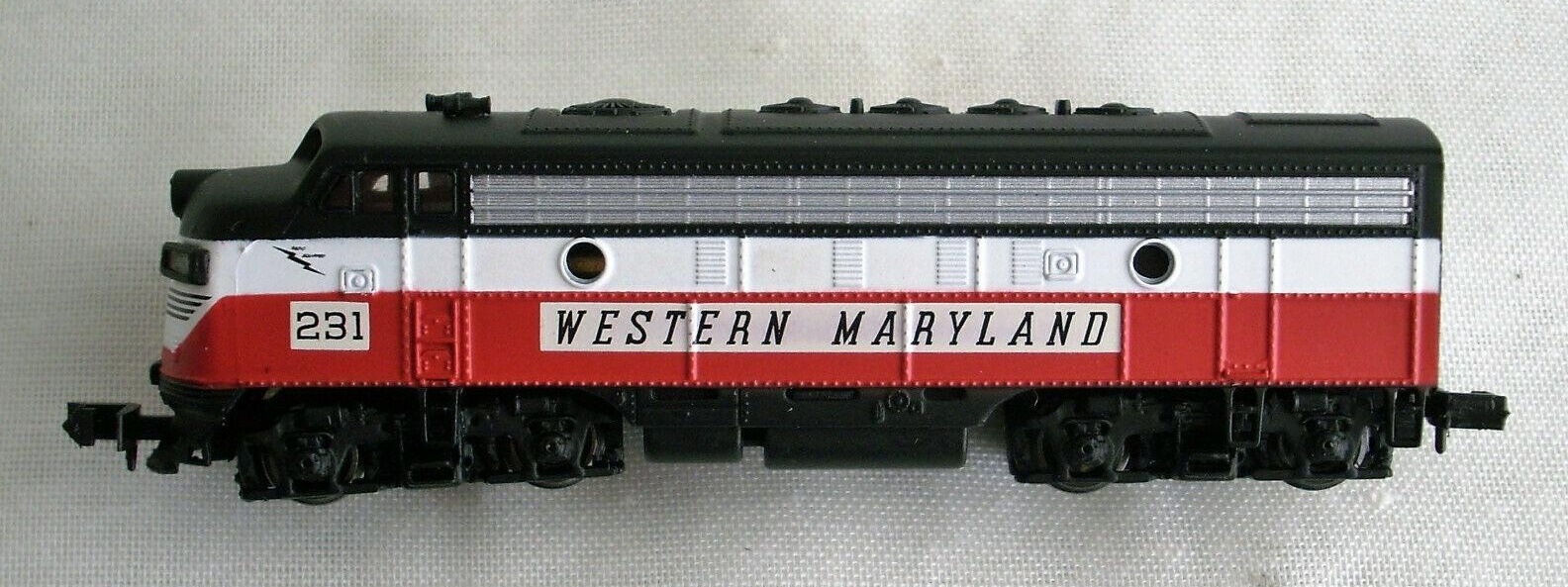History: The DB Class 628 is a twin-car, diesel multiple unit operated by the Deutsche Bahn AG for local passenger rail services.
Each coach rests on two twin-axle bogies. Only the bogie at the close-coupled end of the coach is driven. Power transmission from the motor is achieved using a Voith hydrodynamic transmission system with a converter (Wandler) and a T 311r coupling. Up to Class 628, a T 320 double-converter transmission was used. Motor and transmission are suspended elastically under the lightweight coach body. The operating brake is an automatic compressed air KE disc brake with automatic load braking and electronic anti-skid protection. In addition, for rapid braking, electromagnetic rail brakes are used; these can also be activated separately if required.
Coupled running enables up to four coupled pairs of coaches to be driven from one driver's cab. The control panel resembles that of the DB's standard driving consoles. Safety equipment includes the dead man's switch system, Sifa, which is mandatory in Germany, as well as PZB 90 based on the I60R (Class 628.4) or I60 with ER24 recording device (Class 628.2) and train radio.
Class 628 units have proved to be reliable and economical in practice. Now that newer vehicles have appeared, though, passengers on the 628s will miss a number of refinements, especially air-conditioning, but also modern passenger information systems and easier, more accessible, disabled-friendly doors, because immediately behind the doors (one double or single door in the center and one single door next to each driver's position) there are two steps in order to reach low platforms. On some 628s, new passenger information systems with automatic announcements and displays for the next stop have been installed and in many regions ticket machines have also been fitted, as had been planned in the design.
Each coach rests on two twin-axle bogies. Only the bogie at the close-coupled end of the coach is driven. Power transmission from the motor is achieved using a Voith hydrodynamic transmission system with a converter (Wandler) and a T 311r coupling. Up to Class 628, a T 320 double-converter transmission was used. Motor and transmission are suspended elastically under the lightweight coach body. The operating brake is an automatic compressed air KE disc brake with automatic load braking and electronic anti-skid protection. In addition, for rapid braking, electromagnetic rail brakes are used; these can also be activated separately if required.
Coupled running enables up to four coupled pairs of coaches to be driven from one driver's cab. The control panel resembles that of the DB's standard driving consoles. Safety equipment includes the dead man's switch system, Sifa, which is mandatory in Germany, as well as PZB 90 based on the I60R (Class 628.4) or I60 with ER24 recording device (Class 628.2) and train radio.
Class 628 units have proved to be reliable and economical in practice. Now that newer vehicles have appeared, though, passengers on the 628s will miss a number of refinements, especially air-conditioning, but also modern passenger information systems and easier, more accessible, disabled-friendly doors, because immediately behind the doors (one double or single door in the center and one single door next to each driver's position) there are two steps in order to reach low platforms. On some 628s, new passenger information systems with automatic announcements and displays for the next stop have been installed and in many regions ticket machines have also been fitted, as had been planned in the design.
Railroad/Company: This set of items is comprised of more than one name. Please look at the component items for details on the specific roadnames and/or manufacturers.
Item Links: We found: 1 different collections associated with Rail - Locomotive - DB 628
- Collection N Scale Model Trains: 2 different items.
Item created by: CNW400 on 2020-02-12 08:34:57
If you see errors or missing data in this entry, please feel free to log in and edit it. Anyone with a Gmail account can log in instantly.
If you see errors or missing data in this entry, please feel free to log in and edit it. Anyone with a Gmail account can log in instantly.








